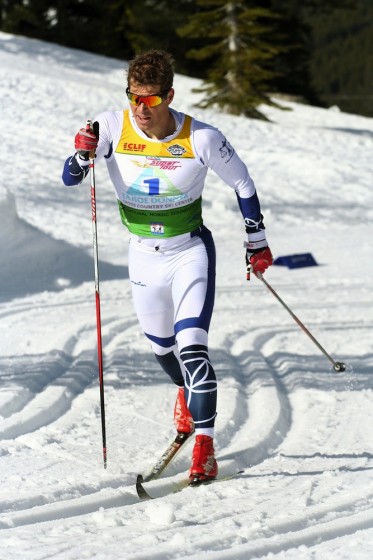
FasterSkier’s coverage of SuperTour Finals and U.S. Distance Nationals is brought to you by the generous support of Concept2, the leading manufacturer of indoor rowers, racing oars, and the SkiErg.
SODA SPRINGS, Calif. — There’s something about racing in the U.S. at SuperTour Finals that seems to suit Kris Freeman (Maine Winter Sports Center/U.S. Ski Team). For the past two seasons he’s come into the spring race series after a winter of feeling off on the World Cup circuit, but on Friday he proved to himself once again that he can return home, rejuvenate, and feel like himself for the last few races of the season.
The 32-year-old won the tour and distance nationals last year after almost skipping the series entirely, and this year he set himself up to potentially repeat by winning the 15 k classic mass start in dominant fashion on Friday, breaking away from the field on the first lap and skiing to a 47.3-second win in the second stage of the tour.
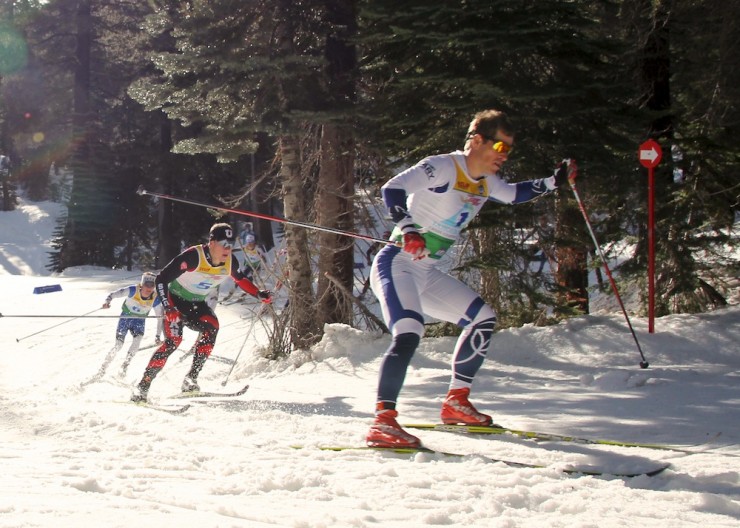
“That went really well,” Freeman said after finishing. “It wasn’t my plan to even necessarily go for the first preem, but there wasn’t much aggression up front.”
Freeman blew the race out early, and in the fight for second Erik Bjornsen (Alaska Pacific University/USST) held his own to outkick Andy Newell (SMS T2/USST). Bjornsen crossed the finish line 3.2 seconds ahead of Newell to claim his second podium of the tour.
The entire field seemed to begin the first mass start event of the tour with some hesitancy. The 7,000-plus feet of altitude makes itself known on the Auburn Ski Club course, so athletes were careful not to go into oxygen debt too early.
This was Freeman’s plan, certainly, but when he realized a few kilometers into the race that he had put a gap on Tad Elliott (Ski & Snowboard Club Vail Team HomeGrown/USST) and everyone else at the top of the course, he decided to run with the lead and expand it if he could.
“I skied the first hill at what I thought was a reasonable pace, thought it turned out that was a little fast,” Freeman said. “Then I saw I had ten seconds on Elliott, who had five seconds on the field, and I was like, ‘Well, I’m just going to go from here.”
The break came earlier than his competitors expected. Newell thought Freeman and Elliott were just going for the first preem, a $100 prize awarded on each of the first two ascents up the A-climb. Elliott avoided the temptation to close the gap on Freeman and held himself in check, while those behind him either couldn’t or wouldn’t accelerate in response.
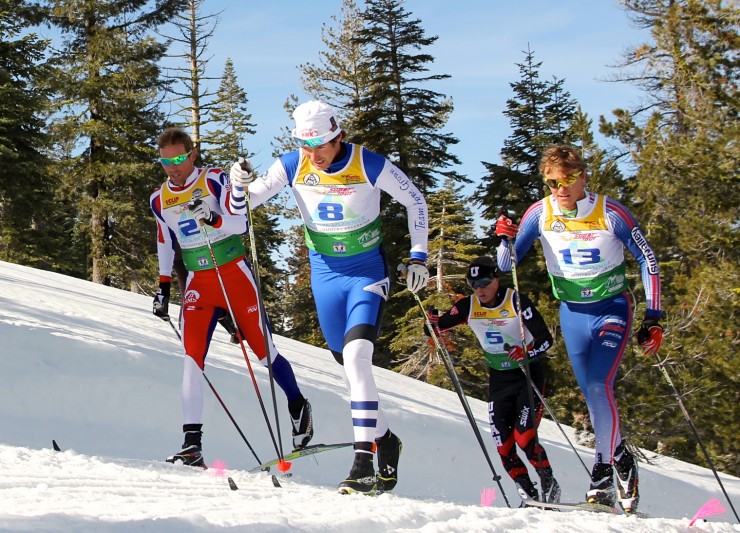
“I thought it’d come back together,” Newell said. “The way I mass-start ski I never lead; I basically ski with the people I’m with. So I thought it’d come back together, but it never did.”
“I think all the rest of us couldn’t really accelerate much after that,” said Sylvan Ellefson (SSCV Team HomeGrown), who skied in the pack with Newell and the rest of the first chase group. “We tried to chase them down for a while — we caught Tad — but never really caught Bird.”
While Elliott got swallowed back up by the chase group at about 8 k, Freeman kept hearing splits he was leading the race by 35 seconds, then a minute. A few quick glances behind him told him all he needed to know — nobody was making moves to challenge his lead. Sloppy conditions meant nobody’s kick was working all the way up the wall-like climb, so he let himself walk in a herring-bone on the last two laps to conserve energy.
“I knew I could not afford to blow up once I had that lead, and I knew I could get five seconds back on that as long as I could double-pole faster everywhere else,” Freeman explained.
The chase group followed suit and crawled to the top of the ascent. Newell, Mike Sinnott (Sun Valley Ski Education Foundation), Bjornsen and Ellefson clustered at the front of the group as Newell decided to slow things down to a laughably-slow pace. It was an odd sight to see — the fastest skiers in the country walking in a race.
“When I was in the front going up that hill I was like, ‘I’m not going to go very fast,’” Newell said. “I’m a sea-level kid, I’m going to go as slow as I can over this hill.”
“It was hilarious,” Ellefson said. “I had no problem with it, ‘cause Bird was gone. He wasn’t really in sight, so it was that fight for second. So if Newell was walking, I was walking, and so was everyone behind us.”
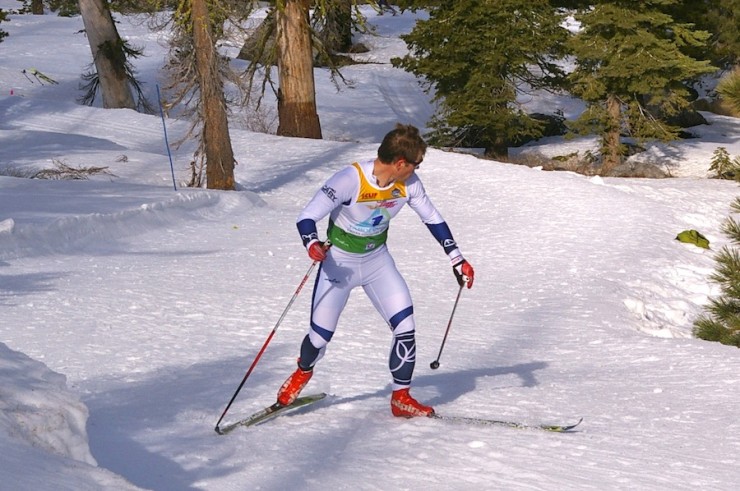
Up ahead of them, Freeman was thriving off the lead. He clearly does well in environments where he can ski his own race.
“For sure it’s the easiest way,” Freeman said. “Then you recover when you want to recover and you go for it when you want to go for it.
“It would be nice to be able to that on the World Cup,” he added with a laugh.
Freeman came into the sun-soaked stadium with no one in sight to claim his third-striaght 15 k classic win at SuperTour Finals in as many starts. Though the race indicates to Freeman that he’s feeling better than he has most of the season, he still doesn’t think his skiing is back to 100%.
“It’s impossible to compare [to the World Cup], because you’re racing at 7,200 feet against an entirely different field, but I haven’t really felt like myself all year,” he said. “I’m going to make some more changes to my training next year and hopefully get back to where I like to feel, but today was pretty close to where I like to feel.”
Behind Freeman, the fight for second intensified in the winding double-pole sections between the big climb and the stadium. On the last lap the pack of a dozen or so skiers in the chase group had split in two, with six skiers separating from the back half. Bjornsen was among those in the first group; he skied in third or fourth over the top. With acceleration over the crest he drew even with Newell and Ellefson, and gained confidence that he could outkick one or both of them.
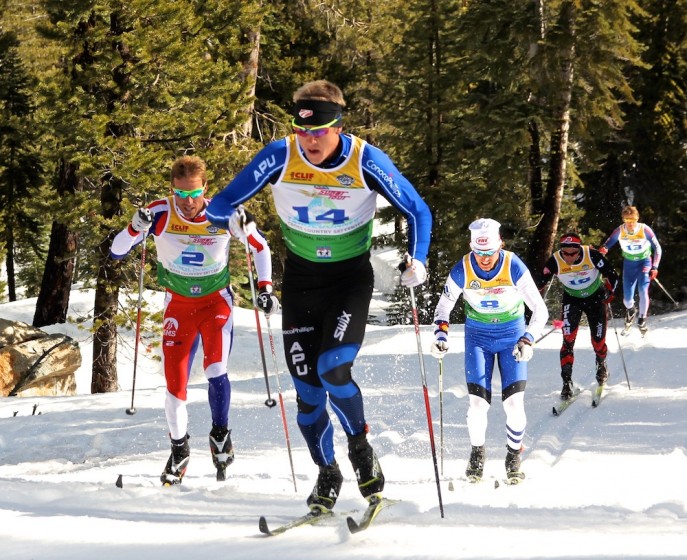
“I thought I could have it,” Bjornsen said. “I feel pretty confident with my finishing, so I tired to hammer the double-pole. Newell and I came beside each other on that last steep hill and I got a little better kick over the top, and that helped me coming into the finish.”
The 21-year-old kept waiting for Newell to pull up beside him in the lanes, but the little bit of extra momentum he had going into the stadium gave Bjornsen more speed, and the challenge he expected never came.
“Today I did it,” Bjornsen said. “He’s a pretty impressive finisher, so I’m really happy I was able to [beat him] today, and maybe someday I can do it again… Newell definitely inspires me a lot.”
At the finish, Newell admitted that Bjornsen played the final climb better than he had.
“He pushed hard over the top, which is good. He got a little gap,” Newell said. “And the stadium is super slow and sunny, so it’s hard to make a move in the stadium.”
In hindsight, Newell was kicking himself a little for not taking Freeman’s early breakaway seriously, but he was altogether happy with a podium finish that was a vast improvement over his 35th-place in the prologue.
“It felt good to have a fair race today, instead of having it be so dependent on the skis and stuff,” he said.
But, Newell continued, “most of the time during the race I was like, ‘Shit, I should have tried to go with Bird when he went, because the pace felt pretty relaxed. But it was fun, I guess.”
Like Newell, Ellefson was thrilled to place where he felt he should. He came through in fourth, less than two seconds behind Newell.
“That was a lot better than yesterday,” Ellefson said. “Honestly, yesterday I finished and I kind of did a little fist pump, because I was psyched with how I raced. And then to see that I was 25th was a huge surprise to me. For guys at our caliber, when you go hard and you know you’ve skied well, you know you put in a top-10 performance. And I was pretty sure of that, but I was 25th.”
Einar Ulsund (University of Utah) took fifth, 3.0 seconds behind Ellefson, and Sinnott finished sixth, four seconds later. Miles Havlick (UU), who led the race with Freeman in the early kilometers, took seventh after another five seconds.
After the prologue and the 15 k, Freeman leads Bjornsen in the tour standings by 12.2 seconds including podium bonuses. The third stage, a classic sprint, takes place on Saturday.
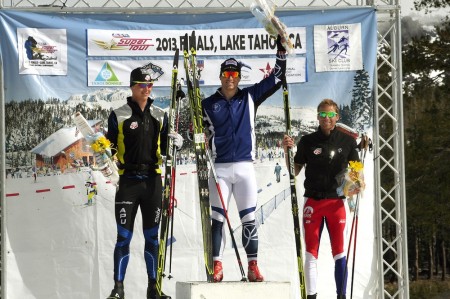
Audrey Mangan
Audrey Mangan (@audreymangan) is an Associate Editor at FasterSkier and lives in Colorado. She learned to love skiing at home in Western New York.




One comment
Pingback: pulled muscle pain